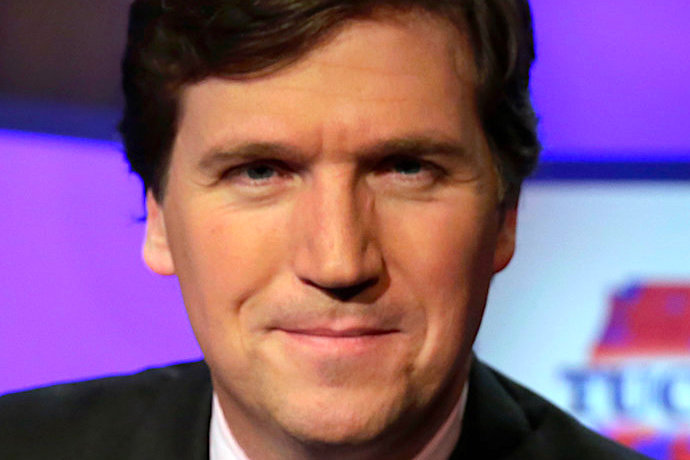On Saturday, 18-year-old white supremacist P.G. drove to the “Tops” supermarket with the intention to kill people of color. He murdered ten people and wounded three others before he was arrested. All ten who were killed were Black. The racism that inspired his actions became clear very quickly—he had uploaded a hate-filled 180-page manifesto before committing the murders, which he live-streamed on Twitch. In addition, experts are now analyzing his several-hundred page long digital diary, including the story of how he was first radicalized. P.G. calls himself a “fascist” and a “Nazi,” and blatantly states his aim to kill people of color. He is a believer in what is known as “White Replacement”—a racist, antisemitic myth. It’s a combination of two conspiracist narratives, the “Great Replacement” and “White Genocide.”
While “White Genocide” has been popular in white supremacist and neo-Nazi circles, “Great Replacement” has been mainstreamed for years—not just in the US but among the European far-right as well. In the US, as has been reported numerous times over the past few days, prominent media figures like Tucker Carlson have promoted the combination of the two narratives, also known as “White Replacement,” publicly for years. In 2021, Carlson said on his show:
“I know that the left and all the gatekeepers on Twitter become literally hysterical if you use the term ‘replacement,’ if you suggest that the Democratic Party is trying to replace the current electorate, the voters now casting ballots, with new people, more obedient voters, from the third world. But, they become hysterical because that’s what’s happening, actually. Let’s just say it: That’s true.”
“Third World” is code for non-white voters—because Carlson only has a problem with non-white immigration. “Every time they import a new voter, I become disenfranchised as a current voter,” Carlson claims. He also said on his show:
“Everyone wants to make a racial issue out of it, ‘Ooh, the white replacement theory.’ No, no, no, this is a voting rights question. I have less political power because they are importing a brand-new electorate…Why should I sit back and take that? The power that I have as an American, guaranteed at birth, is one man, one vote. And they are diluting it.”
But what’s the origin of these two narratives that Carlson binds together?
The conspiracist myth of the “Great replacement” goes back to France, where it first appears around 1900 under the name le grand remplacement. The trilogy Le Roman de l’énergie nationale (“Novel of the National Energy”) by the antisemitic and racist author Maurice Barrès makes the myth popular. The conspiracist narrative goes like this: “Western” (i.e. white, Christian) society is under siege by non-Europeans (non-whites) who seek to replace white Europeans by procreating at a much higher rate. (In some versions, the “replacement” is part of a larger plan by a shadowy Jewish or Jewish-coded “global elite” trying to rule the world.)
The origins of this myth in France have to be seen against the backdrop of French colonial history, especially the fear of white slave owners of slave uprisings when it comes to the construction of the social in- and out-group. The “Great Replacement” became more widely known after Jean Raspail published his novel Le Camp des saints in 1973, which details an invasion of France by “dark-skinned” refugees. In the end, white Christian Europe falls, and chaos and terror reign.
While “The Great Replacement” hails from Europe, a similar conspiracist narrative developed in the US. The myth of an alleged “White Genocide” develops around the 1900s, whose origins can be traced further back to slavery and the fears on the part of white slaveowners that their slaves will rise up against them. This “White Genocide” is planned, according to the conspiracy myth, by a secret cabal that wants to create a “New World Order”—again, code for Jews. Jews want to eradicate the white race by instigating a “race war” and replacing the white population with immigrants.
This narrative was popularized by the eugenicist Madison Grant in his 1916 book The Passing of the Great Race. It gained even more traction in white supremacist and Nazi circles with the publication of the Turner Diaries (1978) by William Luther Pierce. To this day, the Turner Diaries functions as the “bible” of American neo-Nazis and might be the most influential book in white supremacist circles: It influenced both “The Order” and the “Aryan Republican Army.” In 1995, the Oklahoma City bomber replicated a scene from the book and killed 168 people.
Various white supremacist terrorists have named their belief in a “White Genocide” as the motivation for their killing sprees. In the 20th century, ideas of “White Replacement” played a central role in Nazi ideology. Jason Stanley, scholar of fascism at Yale University, writes in the Guardian:
“white replacement theory was the dominant structuring narrative of Nazi ideology. Adolf Hitler also announced his genocidal intent in a lengthy manifesto about the supposed Jewish threat to white civilization, entitled Mein Kampf, which was published in 1924. Hitler also was obsessed by mass immigration, and the threat it posed to ‘white civilization.’”
This is the historical backdrop we should have in mind when Fox News reports on what they call “migrant caravans”—those appear in the Turner Diaries as well.
Racially motivated incidents
When neo-Nazis marched in Charlottesville, they chanted “Jews will not replace us.” While this drew some articles pointing out that white supremacists don’t see Jews as white, they mostly failed to refer to the racist, antisemitic conspiracy theory behind the chant (with some notable exceptions—like this article in the New Yorker). At the same time, the narrative had already been creeping into the Republican mainstream. Yet the dots were still not connected—and certainly not in all coverage.
Carlson was and is certainly not the only one on the Right who’s been mainstreaming versions of the “Great Replacement.” Prominent Republican politicians have joined him in his racist crusade. As has been pointed out since the shooting, Elise Stefanik, the third-highest ranking Republican in the House of Representatives, has not only in the past campaigned on “White Replacement,” but has in fact doubled down on it—even since the Buffalo shooting.
While some large media outlets like the New York Times and the Washington Post have called the shooter’s motivations racist, there are still many euphemisms swirling around, like “racially motivated,” for example, despite the fact that the shooter himself identifies as a racist. This article in The Week actually notes that the shooter “described himself…as a white supremacist,” yet it still uses the euphemistic phrase “racially motivated” in the headline.
And US media aren’t the only ones who fail to call out racism openly. 12 hours after the shooting, as the motivation of the shooter was crystal-clear and widely reported on, a large German newspaper, the Frankfurter Allgemeine Zeitung still featured an article by their US correspondent whose headline referred to the shooter as an “alleged racist” (the headline has since been changed).
And while it’s good to see large media outlets report on the racist “White Genocide” and “Great Replacement” conspiracy theories behind the Buffalo murders, it’s also a result of a striking, years-long failure of news media that this is only just happening for the most part now.
For years, Republicans have been mainstreaming white nationalist rhetoric and openly referring to the “Great Replacement.” Yet, instead of contextualizing it and calling it what it is—blatant white supremacy and white nationalist rhetoric—these positions often get treated by media outlets as just another point of view on the political spectrum. Calling white supremacist ideology “fears over immigration” or other sanitized terms—and failing to consistently put all political stories into context—is a journalistic failure.
The media’s failure to connect dots on racist ideologies and to call them out has perpetuated the mainstreaming of dangerous racist beliefs and—perhaps more importantly—hindered efforts to counter racism with anti-racist education.
An agitator of intolerance… to some
The latest example is the moral panic over “critical race theory,” invented by right-wing activist Christopher Rufo. This isn’t my interpretation of how the CRT panic started—as Rufo will tell anyone willing to listen. He’s boasted that it was his explicit goal to create a new buzzword that would sound scary to conservatives, and then load it up with everything the Right hates about the Left and anti-racism—and thereby completely change the meaning of “CRT.”
The media has failed to illuminate this strategy, and instead walked right into Rufo’s trap. By debating the pros and cons of critical race theory—the actual law school theory, not the Republican scarecrow—they already accepted the Right’s premise, that this was a radical, subversive theory that’s been infiltrating high schools and even kindergartens.
According to the Guardian‘s Jason Stanley, Rufo’s claim was that CRT “was created by German Jewish Marxist intellectuals (the Frankfurt School). And that while the CRT version of this conspiracy theory is new, it is a direct descendant of the ‘cultural marxism’ conspiracy theory, which was a primary topic of Breivik’s manifesto”—the same Breivik that murdered 77 people in Norway in 2011.
When Glenn Youngkin ran for governor in Virginia in 2021 he made the moral panic about CRT into the cornerstone of his campaign. Media reporting framed this as him putting “parents’ concerns” first or focusing on “education” as one of the big themes of his campaign. This furthered the white-washing of the right-wing smear campaign of CRT and the re-branding of this academic legal theory—which is only introduced in some law schools at the graduate level—as a legitimate concern of white parents.
The failure to contextualize this right-wing tactic as a time-tested strategy on the Right, which already existed in the 70s—similar vocabulary, racist fears of white parents being stoked by panic over textbooks which included Black authors or depictions of people of color. In 1974 in Kanawha County, West Virginia, the textbook war led by right-wing activist Alice Moore led to bombings and riots, with the support of the KKK.
Pandering to and stoking the racist fears of white parents has historically been an effective strategy perpetuated by right-wing activists and it echoes to this day with right-wing activists taking over school board meetings and intimidating those already on it. And yet today’s media has largely failed abysmally to not only recognize this tactic and the national organizational effort behind it, but they’ve actually hindered efforts to implement the anti-racist education desperately needed to counter the online indoctrination of white nationalists that the Buffalo shooter and so many others have found compelling in the absence of counternarratives.
The neglectful reporting on the mainstreaming of white nationalist and white supremacist narratives is part of a larger media failure. A misunderstood sense of “neutrality” or “balance” has led many journalists to quote Republicans and Democrats next to one another on these issues as if each were just different but equally valid viewpoints on the political spectrum—actively obscuring that one of the two major American parties now openly subscribes to white nationalist ideology.
There are plenty of examples of this false equivalency. A New York Times article from October 2021 states:
“Republicans are using fears of critical race theory to drive school board recalls and energize conservatives, hoping to lay groundwork for the 2022 midterm elections.”
This is not an incorrect observation—but it fails to contextualize that the fear of CRT was manufactured by right-wing activists and cynically used by mainstream Republicans for their own political gain. Another failure is the refusal to state true assessments because they appear “partisan,” as a Times article on Christopher Rufo illustrates, in which the author describes him as: “Rufo…who has become, to some on the left, an agitator of intolerance.” As though a man who brags about dredging up and repurposing racist, antisemitic conspiracy theories isn’t simply an agent of intolerance.
Falsely understood journalistic “neutrality,” the refusal to spell out what euphemisms used by conservative activists mean, leads to a funhouse mirror effect; it distorts the reality of a democracy under attack from the right by engaging in both-sides-ism, which appears in that same article on Rufo: “He has emerged at the front of another explosive cultural clash, one that he sees as even more politically potent and that the left views as just as dangerous: the battle over L.G.B.T.Q. restrictions in schools.”
One is left to wonder: does the New York Times really believe that LGBTQ equality presents as great a danger to society as the restriction of the rights of LGBTQ people? Any danger at all?
A declaration of the fetishization of independence
In his latest piece for The Nation, Dan Froomkin specifically lays out a whole list of the New York Times’ failures. It’s a devastating indictment on the paper’s political coverage (maybe with the exception of the Times’s investigative branch). Froomkin names “spectacular understatement … pox on both your houses … giving both parties credit for solving problems entirely created by Republicans … [and] denial and gaslighting” among his list of journalistic sins, and he has the receipts to back them up. He calls on incoming New York Times editor in chief Joe Kahn to listen to the paper’s critics on these issues.
Kahn, however, has already given a strong indication that he won’t change the paper’s approach to the profound asymmetry of the nation’s two parties. In an interview with the Columbia Journalism Review in April, Kahn declared:
“I honestly think that if we become a partisan organization exclusively focused on threats to democracy, and we give up our coverage of the issues, the social, political, and cultural divides that are animating participation in politics in America, we will lose the battle to be independent.”
The statement that mainly focusing on the threat to American democracy as a news organization would make it “partisan” is bizarre—and a result of the media’s fetishization of “bipartisanship,” long after it has ceased to exist, because Republicans have refused to engage in regular politics within the bounds of democracy.
If being “partisan” when it comes to the existence of democracy is a problem for news organizations, they’ve already failed—and won’t be able to counter the barrage of authoritarian, proto-fascist and fascist disinformation and legislation that’s coming from the Republican side. If “independence” means not calling out the attacks on American democracy for what they are, the word has lost all meaning.
So what would be a responsible way to report on Republicans, then? Well, for starters: every time a Republican voices white nationalist and other racist dog whistles, they need to be called out, not merely quoted—and they need to be called out on it every time. Every time a Republican who has voiced “Great Replacement” views in the past is interviewed, he or she needs to be explicitly asked about it—and if they don’t actively disavow their past claims, it needs to be stated that they subscribe to white nationalist ideology—an ideology that has killed hundreds in the US in the last years alone, and millions in the last century worldwide.
At the very least, the responsible journalistic recourse is to contextualize, to make both the individual and the reader aware of the fact that they’re using white nationalist and white supremacist rhetoric, and then to follow up. If they use it after having been alerted to its meaning and origin, they need to be called a white supremacist. Not someone who uses “racially charged language,” but a white supremacist.
Yes, even him, the ‘respectable’ one
Time is running out. According to a recent AP-poll, a third of Americans believe in this conspiracy. The failure of the media to call out racist rhetoric has led to its mainstreaming and has actively hindered efforts to counter it by including anti-racist education into the nation’s curricula. P.G. won’t be the last young man radicalized online and set out to murder Black people, or Jews, or Asians, or any other ethnic group he’s learned to hate.
The shooter of Christchurch murdered people at mosques, the Tree-of-Life shooter killed people attending a synagogue, and the Charleston shooter killed Black people attending church. What might seem like a fairly diverse group of victims actually has one common denominator: the “Great Replacement”—a theory each killer subscribed to, which combines hatred of Muslims, people of color, immigrants and Jews. The killers were part of the organized “White Power” movement.
In media coverage, white killers like them are often referred to—not just in American media—as “mentally troubled” and “lone wolves.” This not only obscures their part in an organized hate movement, it also betrays a deep misunderstanding of how this movement operates. In fact, white supremacists have adopted the term “lone wolf” and use it themselves to keep mainstream media from recognizing the “leaderless resistance” structure of the “white power” movement.
Political journalists have to either educate themselves or refer to experts on the matter. This also applies when it comes to the question of how mainstream white nationalist narratives have become in today’s Republican Party, and the conservative movement in the US as a whole. While it may not be surprising that Stephen Miller, Trump’s former white nationalist senior advisor, was a fan of the racist novel Camp of the Saints, which is very popular in white supremacist circles, and directly influenced the narrative of the “Great Replacement,” it may shock them to find out that as late as 2004, a big name of American conservatism was recommending the book: William F. Buckley.
While recently, some light has been shed on Buckley’s openly segregationist attitudes in the 50s and 60s, and his support for apartheid has been highlighted, he’s still seen as the “gatekeeper” of “respectable” modern conservatism. The one who “kept the crazies at bay,” and kept the extremists out of the party. He might have kept them out of elite circles—but he still used their extremist networks to get out the vote, as historian John S. Huntington has shown. It was about optics, not ideology. That Buckley still was a fan of the Camp of the Saints in 2004 shows how deeply even a “respectable” figure like him was attracted to white supremacist narratives.
Republican narratives on abortion are influenced by this as well, since anxiety over declining birth rates of white people is a crossover with white nationalist ideology. Kathleen Belew, a scholar of the “White Power” movement, explained the connection in the New Yorker recently:
“The idea is simply that many different kinds of social change are connected to a plot by a cabal of élites to eradicate the white race, which people in this movement believe is their nation. It connects things such as abortion, immigration, gay rights, feminism, residential integration—all of these are seen as part of a series of threats to the white birth rate. One thing you’ll notice in the manifestos and in the talking points, really going back through the twentieth century, is this focus on the reproductive capacity of white women in maintaining the white race as a nation.”
It’s this entering of the importance of the maintenance of the “white race” that’s central to narratives like the “Great Replacement” and “White Genocide.” This also explains why versions of these narratives can be applied by right-wing extremists in different countries, because it lets them insert whatever “enemy group” that they want to attack—be it Arabs, Muslims, Jews or any other marginalized group that they understand as non-white (white, of course, doesn’t refer to skin color alone, but is merely a concept). Belew analyzes:
“It’s about the fundamental importance of the preservation and birth rate of the white race. So the elements that are consistent across time are the idea that the white race can be threatened by intermixing and the idea that there is some kind of evil, élite force interested in eradicating it. It’s not just about passive demographic change, and the news stories we see pretty often about when a county or a city or the nation will no longer be majority white. It’s about an apocalyptic threat perpetrated by what these conspiracists think of as a cabal. They see, for instance, abortion as a scheme to lower the white birth rate. They see residential integration as a scheme to lower the white birth rate. They see feminism as a scheme to keep white women out of the home and lower the white birth rate.”
It’s the responsibility of the media to contextualize remarks by GOP politicians—like JD Vance, who connected nationalism with fertility rates—as well as the usage of a CDC footnote which Samuel Alito quoted in the leaked draft of his SCOTUS opinion, which will likely deliver the anti-abortion crusade of the Right a decisive victory. The quoted footnote claims that there are enough potential adoptive parents to meet the “domestic supply of infants.”
Otherwise, the mainstreaming of white nationalism will continue, past a tipping point, if we’re not already there yet. The “Great Replacement” and “White Genocide” are calls for violence by adherents—sometimes covertly, sometimes not. Every single politician, pundit and media personality who promotes the “Great Replacement” has contributed to these killings. And every mainstream media journalist who fails to contextualize white nationalist rhetoric will be complicit.





